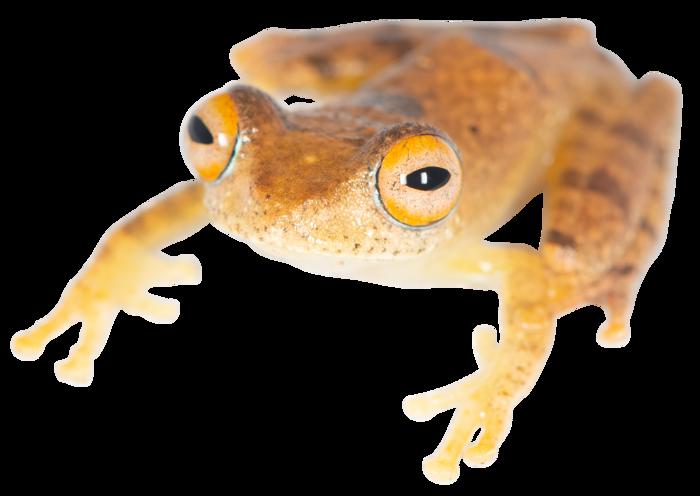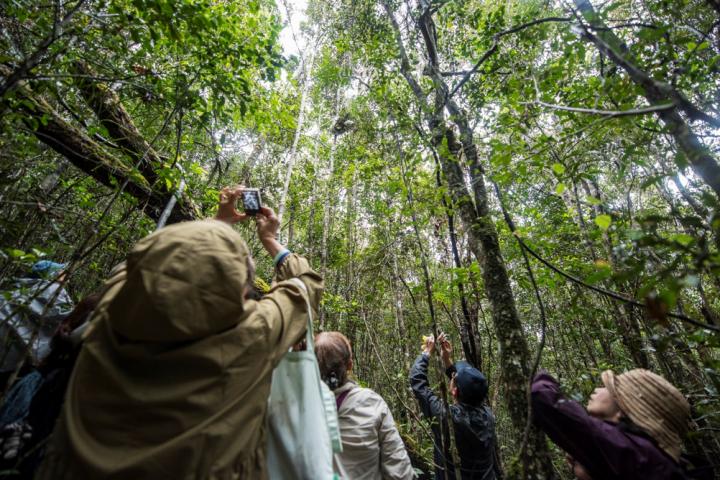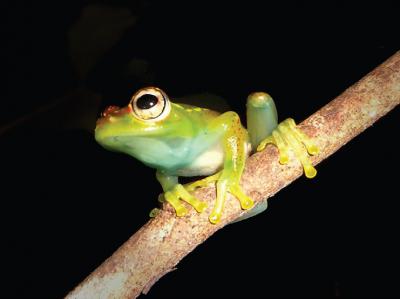Mysterious new frog species found to croak like ‘Star Trek’ special effects
Frog calls sound similar to boatswain whistle and tricorder from Star Trek series, researchers say
Your support helps us to tell the story
From reproductive rights to climate change to Big Tech, The Independent is on the ground when the story is developing. Whether it's investigating the financials of Elon Musk's pro-Trump PAC or producing our latest documentary, 'The A Word', which shines a light on the American women fighting for reproductive rights, we know how important it is to parse out the facts from the messaging.
At such a critical moment in US history, we need reporters on the ground. Your donation allows us to keep sending journalists to speak to both sides of the story.
The Independent is trusted by Americans across the entire political spectrum. And unlike many other quality news outlets, we choose not to lock Americans out of our reporting and analysis with paywalls. We believe quality journalism should be available to everyone, paid for by those who can afford it.
Your support makes all the difference.Scientists have found seven new species of frogs in Madagascar whose high-pitched calls they say are like the “sound effects from the sci-fi television series Star Trek”.
Researchers from the University of Copenhagen say the frogs, found across the rainforests of Madagascar, emit whistling sounds while communicating with others of their species.
While some may liken these frog calls to those of some bird or insect, Star Trek fans may find them to be similar to the “boatswain whistle” and a device called the “tricorder”, scientists say in a study published in the Vertebrate Zoology journal on Tuesday.
“That is why we named the frogs after Kirk, Picard, Sisko, Janeway, Archer, Burnham, and Pike – seven of the most iconic captains from the sci-fi series,” study co-author Miguel Vences said.

Scientists say the frogs are not easily accessible and it requires “a bit of trekking” to find them.
“We had to undertake major expeditions to remote forest fragments and mountain peaks,” Dr Vences said.
“There’s a real sense of scientific discovery and exploration here, which we think is in the spirit of Star Trek.”
The frogs live near fast streams in the most mountainous regions of Madagascar. Scientists suspect the loud background noise of this terrain could be why the frogs developed such high pitches.
“If the frogs just croaked like our familiar European frogs, they might not be audible over the sound of rushing water from rivers they live near,” Jörn Köhler, another author of the study, said.
“Their high-pitched trills and whistles stand out against all that noise.”

Scientists documented a type of high-pitched sound made by the frogs called “advertisement calls”, which conveys information about the male frog’s suitability as a mate to females. Each of the seven species makes a distinct series of the whistles, allowing researchers to tell them apart.
Genetic analysis confirmed that each of the seven frog types was a different species.

Madagascar, a tropical island about the size of France off the east coast of Africa, is a tropical home to nearly a tenth of all the world’s frog species.
“We have only scratched the surface of what Madagascar’s rainforests have to offer. Every time we go into the forest, we find new species, and just in terms of frogs, there are still several hundred species that we have not yet described,” Andolalao Rakotoarison, another of the study’s authors, said.
The species are accustomed to very specific habitats and that makes them vulnerable to climate change, researchers warn.
They call for conserving Madagascar’s biodiversity to ensure these unique species and their habitats are preserved for the future.
Join our commenting forum
Join thought-provoking conversations, follow other Independent readers and see their replies
Comments